Meme, once considered the "spiritual support" of Generation Z, has now become a popular investment category in the current cryptocurrency market. From the Solana ecosystem in 2024 to the current BNB ecosystem, Memecoins have undoubtedly become tools for ecosystems to capture attention. Behind this phenomenon is a multiple resonance of speculative logic, infrastructure upgrades, and social media boosts. The irrationality under the financial atmosphere has pushed the nihilism of Meme to its peak.
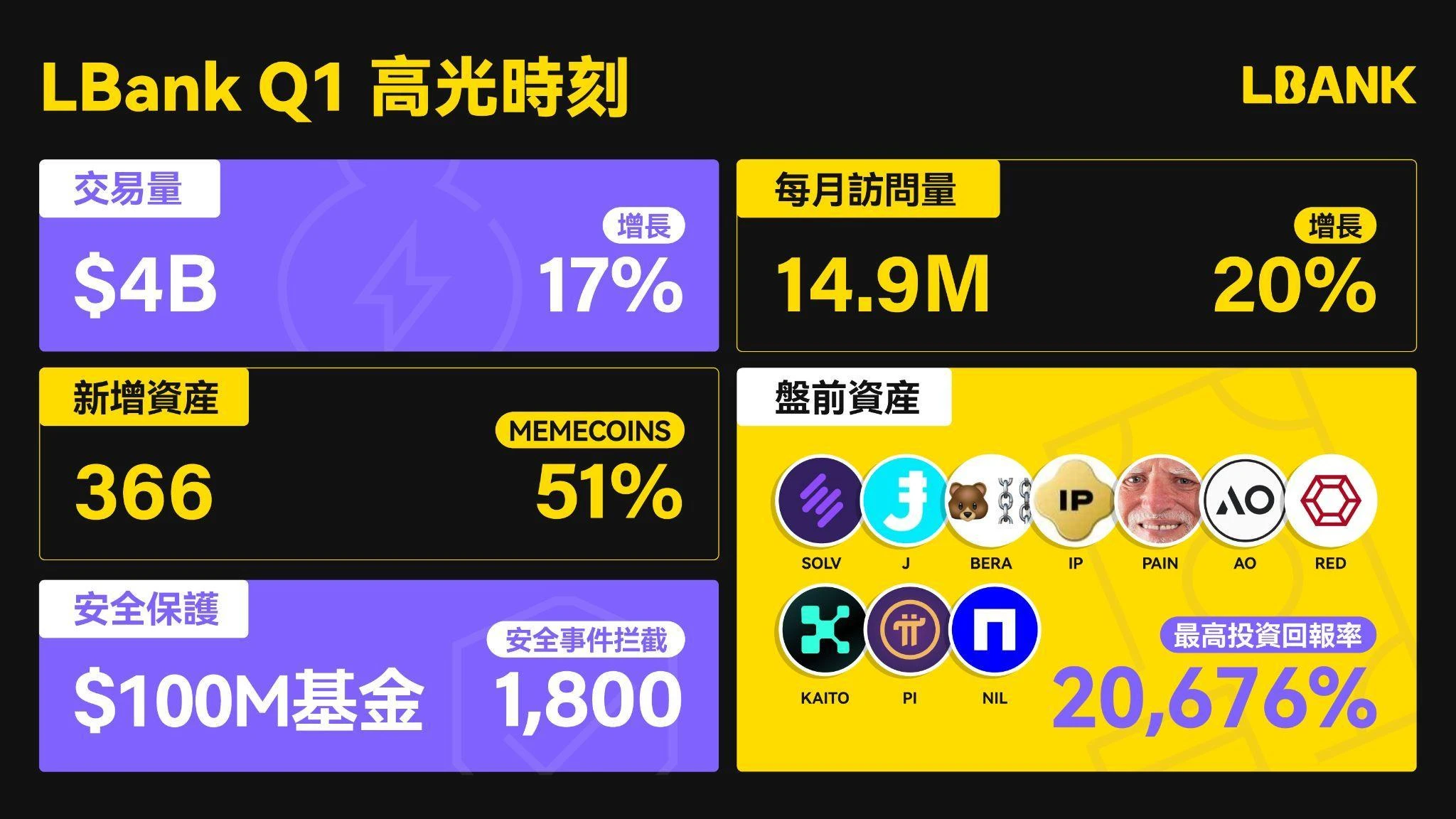
In this frenzy, LBank, with its keen market sense, quickly captured 80% of the top Meme projects on the BNB chain. Data shows that tokens such as QUQ, BNBCARD, BUBB, TUT, and MUBARAK saw an average increase of 1,500% after being listed on LBank. This precise layout not only stems from a rapid response to market hotspots but also relies on LBank's systematic strategy in the Meme track—rapid listing, strict asset selection, and risk coverage, which together build its competitive barrier.
Rapid Listing: The Winning Rule of Market Preemption
In the fast-changing Meme market, the speed of listing directly determines the ceiling of user profits and the market share that CEX can capture. LBank launched the "X Plan" in December 2024, which compresses the listing review time to the industry's limit through a whitelist mechanism and dynamic assessment model.
From the data, it takes an average of only 6 hours for Meme projects on the BNB chain to go from on-chain minting to being listed on LBank, while Binance Alpha takes 48 hours, and the main site voting listing cycle can take as long as 7 days, causing users to miss over 70% of the price increase window. In terms of quantity, in Q1 2025, LBank listed 185 Meme coins (51% share), far exceeding Binance and OKX, with 94% of the projects seeing increases of over 100%, and 20% exceeding 500%, creating a significant "first-mover advantage."
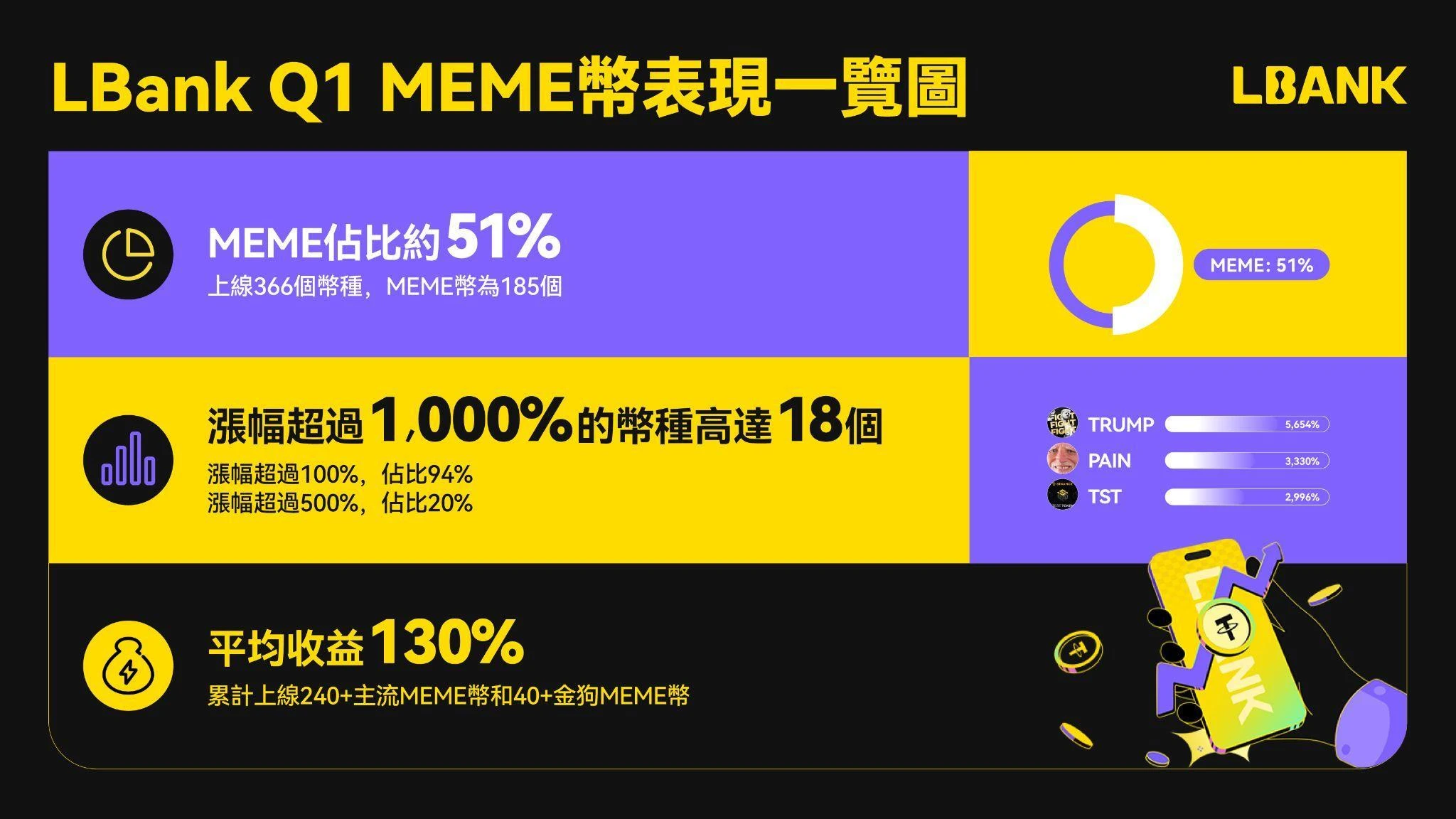
Behind this efficiency crushing is the essential difference in traffic allocation rights between traditional CEX and LBank. Taking the TRUMP coin as an example, it was listed on LBank just 2 hours after on-chain minting, with a 24-hour increase of 60 times, while Binance only listed it after its peak popularity, at which point the price sharply corrected by 51%. This "time arbitrage" means that LBank positions itself at the market sentiment high point through rapid listings, while traditional exchanges become mere buyers due to lengthy processes. This strategy not only satisfies users' thirst for early opportunities but also forces the industry to redefine the standards of listing efficiency.
Strict Selection Logic: The "Antidote" Against Industrialized Token Issuance
Although industrialized token issuance lowers the project threshold, it also gives rise to systemic risks. Data shows that among the 100,000 Meme coins issued daily on the Solana chain, the survival rate is less than 0.1%, with most projects having a lifecycle shorter than 24 hours, evolving into a "fast-track" mode of drinking poison to quench thirst.
In response, LBank launched a "strict selection strategy," filtering out low-quality assets through dual standards: first, community consensus as the core screening indicator. The number of holding addresses, Twitter interaction volume, and Discord daily active users form an evaluation triangle. For example, before PAIN was listed, its Twitter interaction volume exceeded that of similar projects by 300%, indicating its explosive potential; second, a liquidity prediction mechanism. Meme coins are highly volatile, and insufficient liquidity can lead to extreme market conditions. LBank not only assesses the market recognition of projects but also deeply examines initial capital investment and liquidity pool depth to ensure smooth trading and reduce slippage risk.
The effectiveness of the strict selection strategy has been validated by the market. In 2025, the Meme coins listed on LBank had a zeroing rate far below the industry average mortality rate. This "anti-fragility" not only protects user assets but also promotes LBank's upgrade from a "traffic entry point" to a "value discovery platform," reshaping the selection standards in the Meme market, and thus being rated by CoinGape as the "preferred trading platform for Meme investments."
Depth is King: LBank's Liquidity Dominance
In the competition of the Meme track, liquidity is one of the key indicators of an exchange's strength, and LBank, with its absolute market share advantage, has proven its dominant position in the trading of Meme coins. According to data from CoinMarketCap and CoinGecko, LBank's market share in several popular Meme coins far exceeds that of other CEXs, demonstrating outstanding liquidity depth and user recognition.
From the data, LBank has a market share of 77.04% on QUQ, almost completely dominating the trading market for this project, while Gate.io, BitMart, and MEXC have market shares of only 0.16%, 3.45%, and 1.36%, respectively, showing a significant disparity. This highly concentrated market share means that the trading depth of QUQ on LBank is far higher than that of competing platforms, allowing users to trade within a lower slippage and more stable price range, avoiding the impact of severe price fluctuations due to insufficient liquidity. A similar situation also occurs with projects like VINE (65.28%) and PAIN (45.12%), where LBank's market share is far ahead, showcasing an absolute advantage in trading depth.
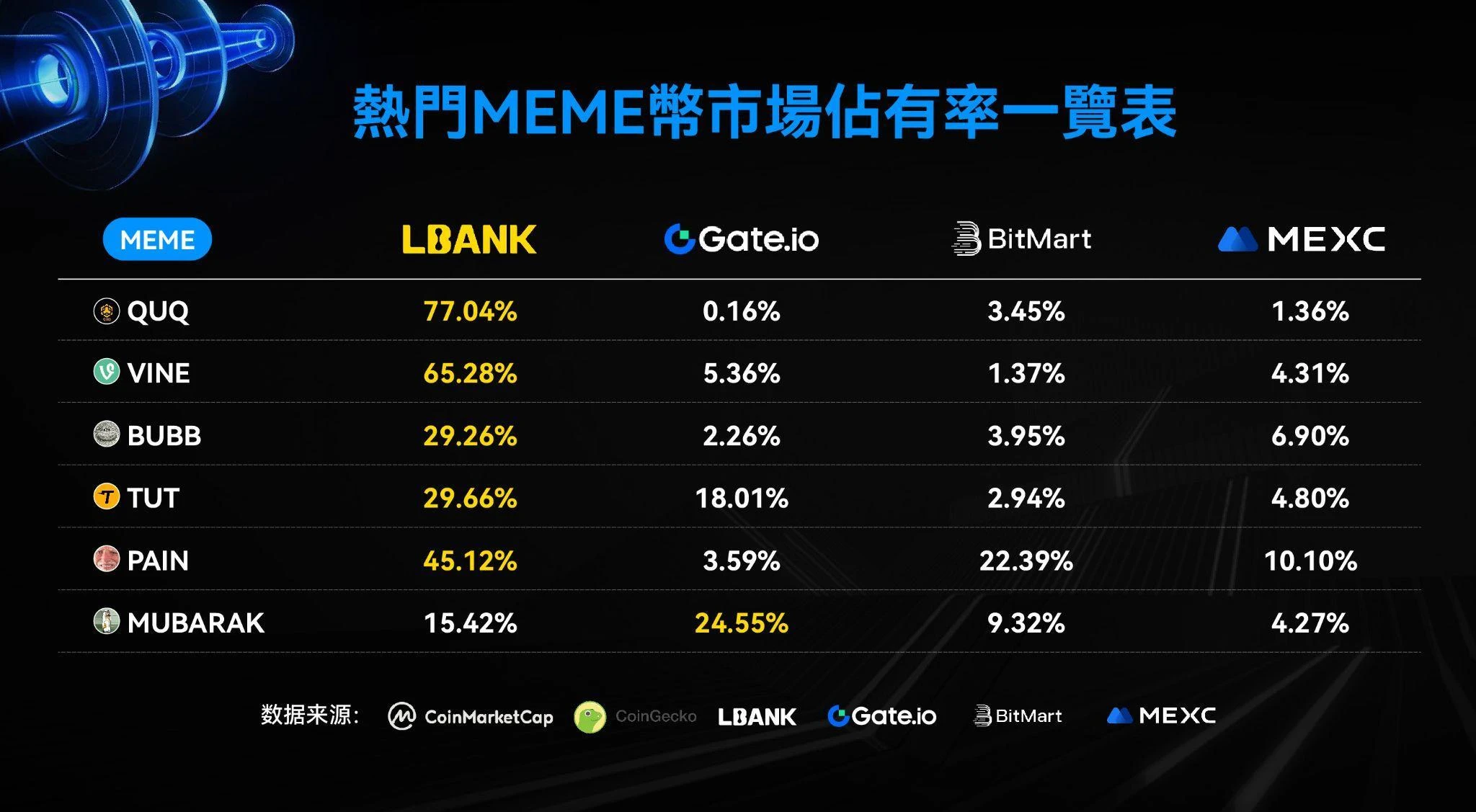
LBank's liquidity advantage is not only reflected in market share but also directly affects user trading experience. A higher market share means deeper liquidity pools, which can reduce price fluctuations in extreme market conditions, provide more stable buy and sell orders, and lower trading slippage. On March 26, the liquidity battle between JELLYJELLY and Hyperliquid exposed the vulnerabilities of DEX in extreme market environments—an oracle vulnerability led to a $240 million short crisis, price manipulation, liquidity depletion, and forced liquidation of user assets, making the liquidity competition landscape between CEX and DEX a focal point once again.
Prior to this, LBank had already listed Jellyjelly spot, with a market share of 8.82%, higher than other CEXs. Meanwhile, LBank quickly launched JELLYJELLY contracts, achieving on-chain diversion and capturing market traffic through precise trading activities. Compared to the mechanism risks of DEX, LBank stands out with its deep liquidity and flexible contract trading deployment, further strengthening CEX's value positioning in the Meme track.
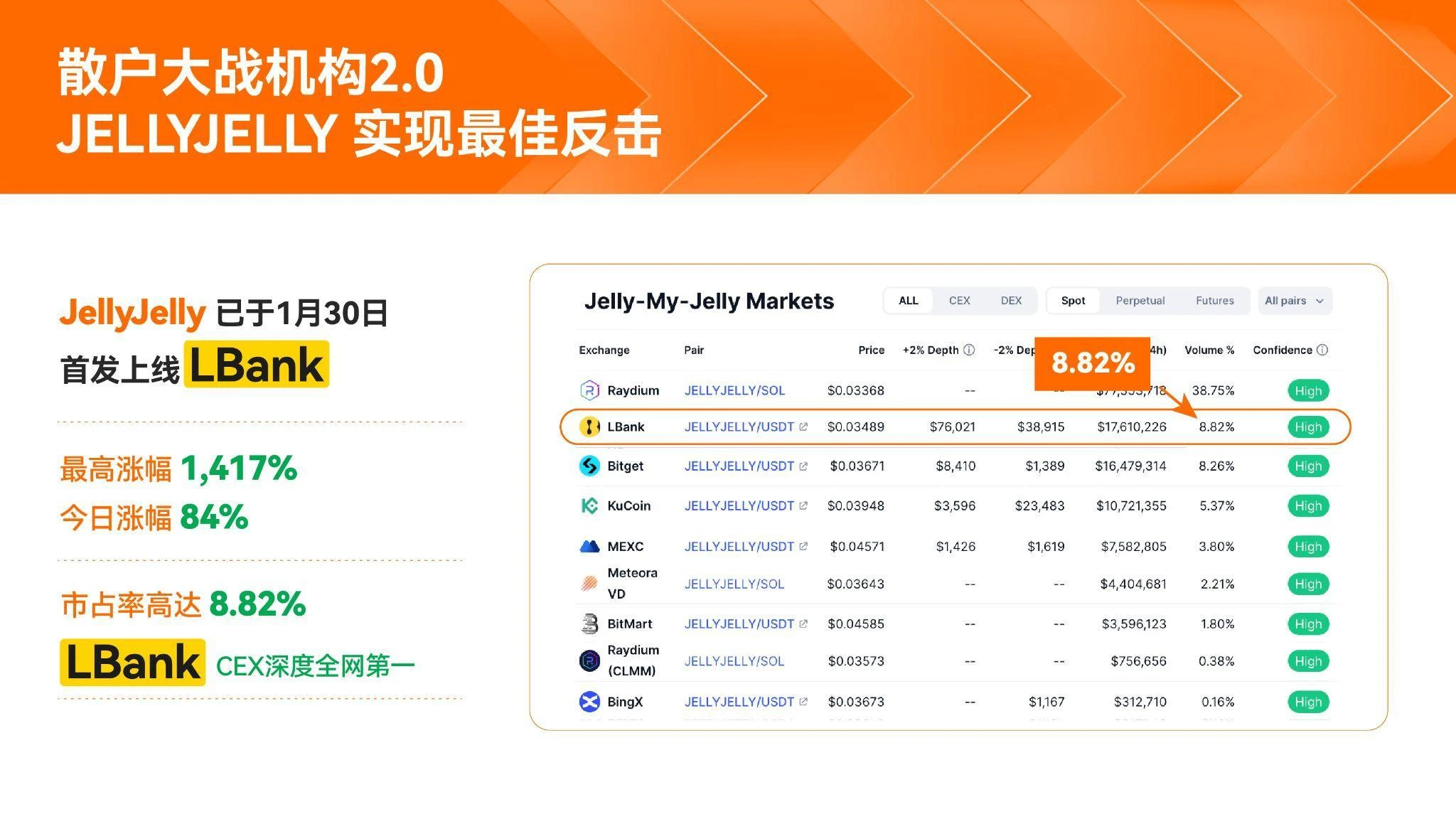
Pre-Market Compensation: The Ultimate Trust Game of Retreating to Advance
To alleviate users' fears of high volatility in Meme coins, LBank innovatively launched a "pre-market compensation" mechanism, which implicitly contains deep logic from behavioral finance: the price protection clause stipulates that if the pre-market settlement price is lower than the purchase cost, LBank will make up the difference at the industry average price. This "risk-sharing" model quickly won user trust—by Q1 2025, the number of users trading in LBank's pre-market increased by 320% year-on-year, with the average return rate of the top 3 projects reaching 70 times (with RED reaching as high as 206 times).
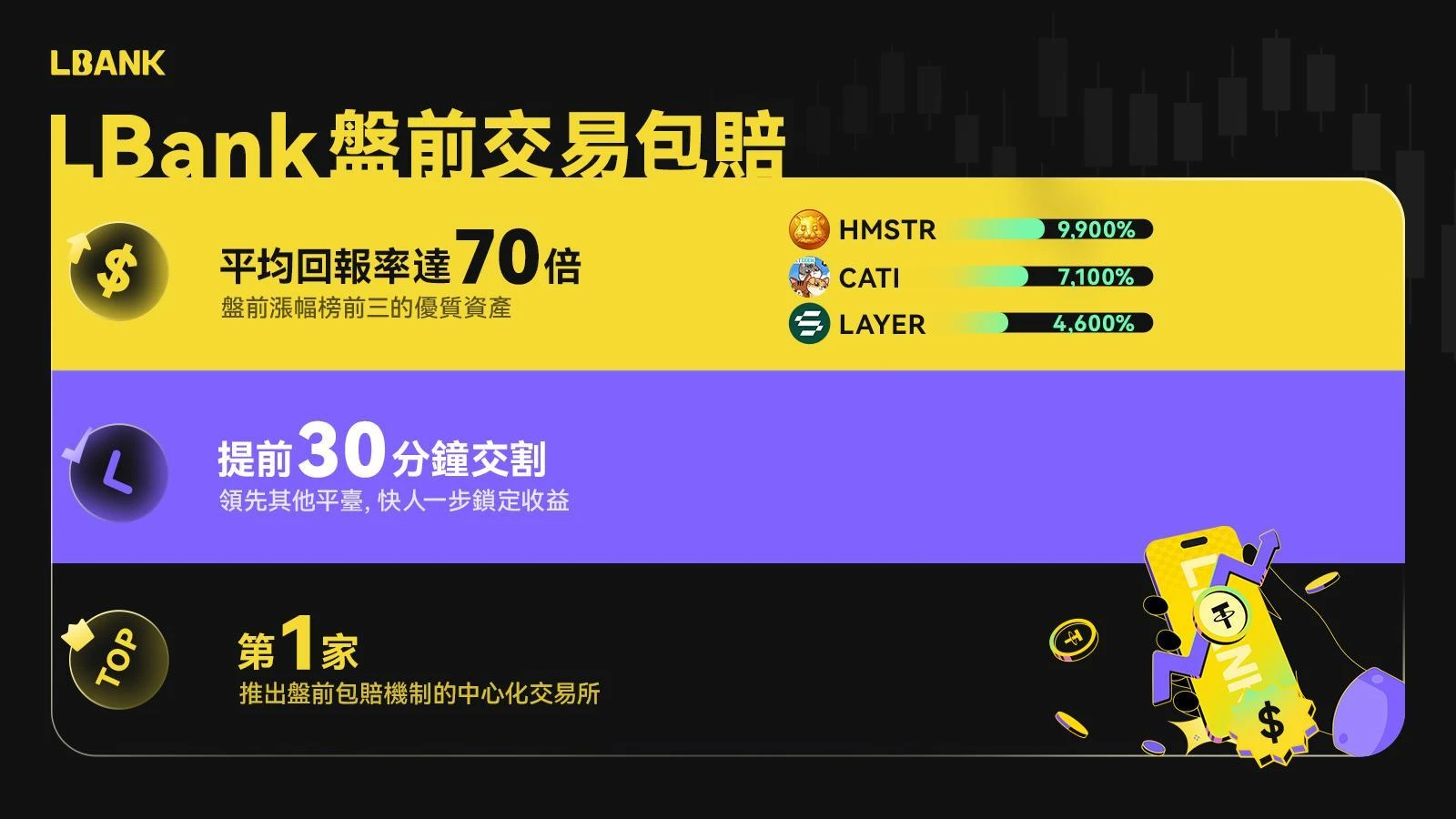
For exchanges, what is truly needed is to seize short-term irrational fluctuations during peak traffic periods, using reverse thinking to explore new market variables. By cultivating satisfaction and maintaining calm, they can utilize the catfish effect to maintain presence and discourse power. Essentially, pre-market compensation is a carefully designed trust game. LBank exchanges short-term benefits for long-term user stickiness, ultimately transforming risk hedging into traffic compounding. This strategy not only subverts the conservative risk control model of traditional CEX but also creates a new paradigm of "user interests first."
Endgame Thoughts: Insights from the "LBank Paradigm" in the Meme Track
Now, we find ourselves in a vast pump of the world, being divided.
The game between CEX and DEX, as well as the combination of on-chain and CEX, is forming a market full of uncertainties. As project parties, investors, and users increasingly demand liquidity, return rates, and platform transparency, the competition between centralized and decentralized exchanges will become even more intense.
LBank's success is no accident; its core lies in integrating the liquidity advantages of traditional CEX with the market sensitivity of DEX, constructing a full-cycle closed loop of "rapid listing - strict asset selection - deep protection - risk coverage." When the wave of industrialized token issuance creates market entropy, LBank achieves "local negative entropy" through refined operations, becoming the order-definer in the chaos of Meme.
In the future, as regulatory frameworks become clearer and market sentiment undergoes periodic adjustments, the Meme track may experience a bloody reshuffle. However, LBank's practice shows that only by placing user interests above traffic games can one become the winner left on the beach after the tide recedes. In this survival game of the crypto world, speed, selection, and trust remain the unbreakable golden rules.
免责声明:本文章仅代表作者个人观点,不代表本平台的立场和观点。本文章仅供信息分享,不构成对任何人的任何投资建议。用户与作者之间的任何争议,与本平台无关。如网页中刊载的文章或图片涉及侵权,请提供相关的权利证明和身份证明发送邮件到support@aicoin.com,本平台相关工作人员将会进行核查。




